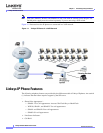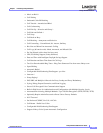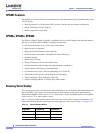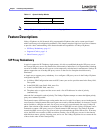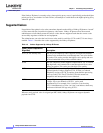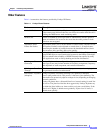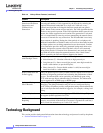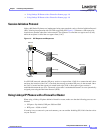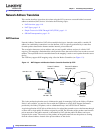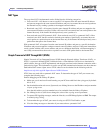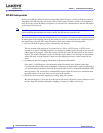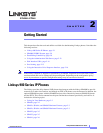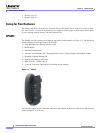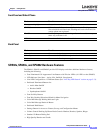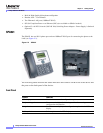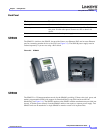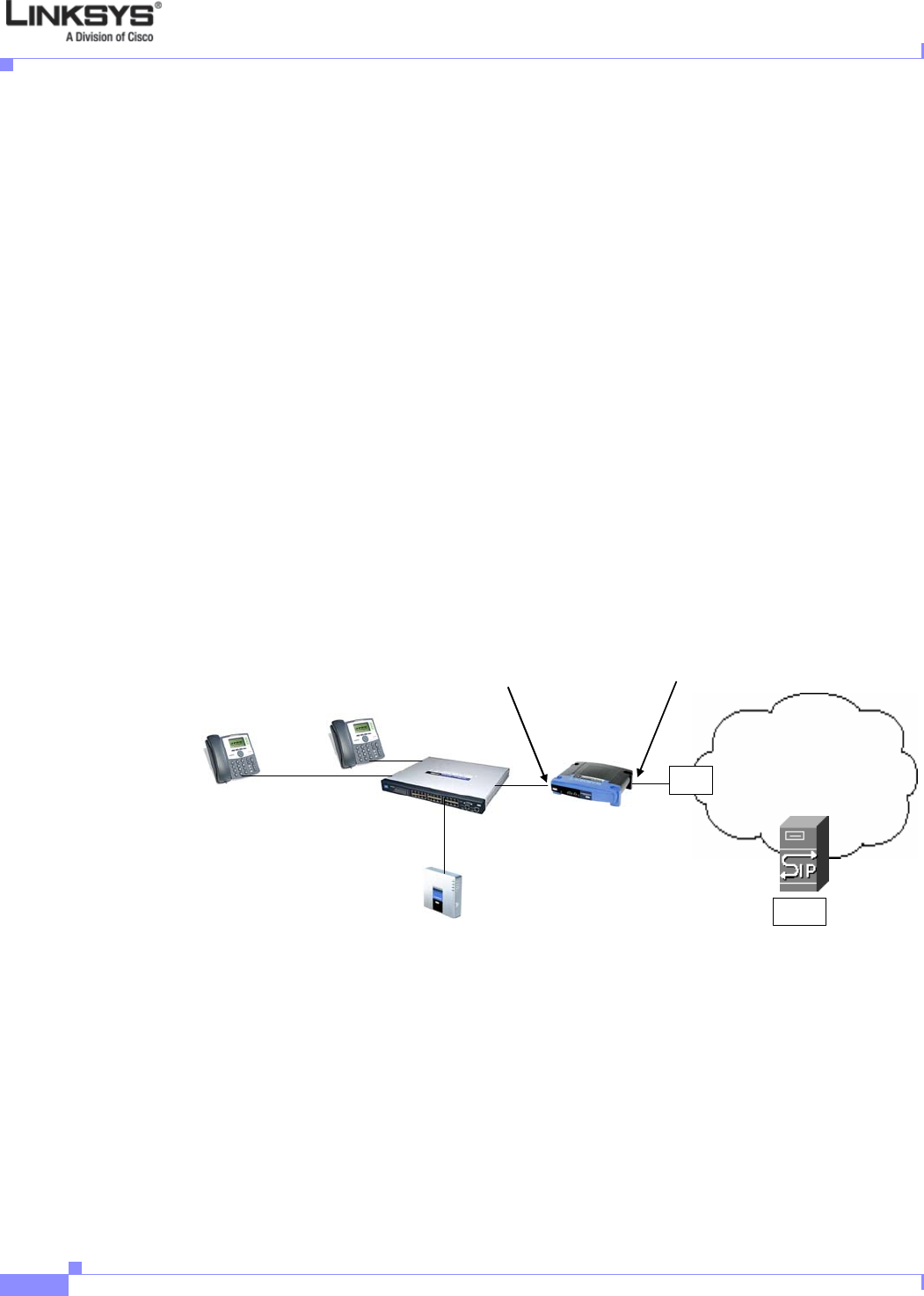
1-10
Linksys IP Phone Administrator Guide
Firmware Version 5.1
Chapter 1 Introducing Linksys IP Phones
Technology Background
Network Address Translation
This section describes issues that arise when using the LVS system on a network behind a network
address translation (NAT) device. It includes the following topics:
• NAT Overview, page 1-10
• NAT Types, page 1-11
• Simple Traversal of UDP Through NAT (STUN), page 1-11
• SIP-NAT Interoperation, page 1-12
NAT Overview
Network Address Translation (NAT) allows multiple devices to share the same public, routable, IP
address for establishing connections over the Internet. NAT is typically performed by a router that
forwards packets between the Internet and the internal, private network.
The association between a private address and port and a public address and port is called a NAT
mapping. This mapping is maintained for a short period of time, that varies from a few seconds to several
minutes. The expiration time is extended whenever the mapping is used to send a packet from the source
device.
The ITSP may support NAT mapping using a Session Border Controller (see Figure 1-3).
Figure 1-3 NAT Support with Session Border Controller Provided by ITSP
This is the preferred option because it eliminates the need for managing NAT on the Linksys IP phone.
If this is not available, you need to discuss with the ITSP how to use the NAT Support Parameters
provided by the Linksys IP phone, such as <Outbound Proxy> and <STUN Server Enable>.
A typical application of NAT allows all the devices in a subscriber network to access the Internet through
a router with a single public IP address assigned by an ISP. The IP header of the packets sent from the
private network to the public network is substituted by NAT with the public IP address and a port
assigned by the router. The receiver of the packets on the public network sees the packets as coming
from the external address instead of the private address of the device.
SIP Proxy
Internet
ITSP
NAT Device
SPA9000
192.168.1.102
ISP
DHCP
server
192.168.1.101
192.168.1.100
Session Border
Controller
Private IP address
192.168.1.1
External IP address
assigned by ISP



